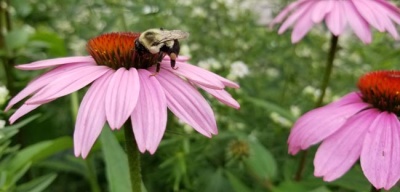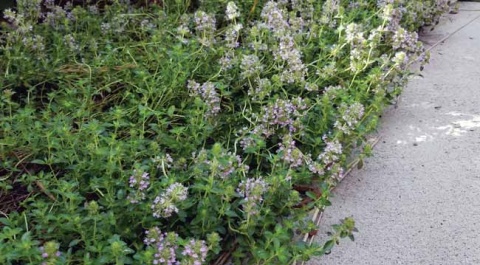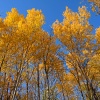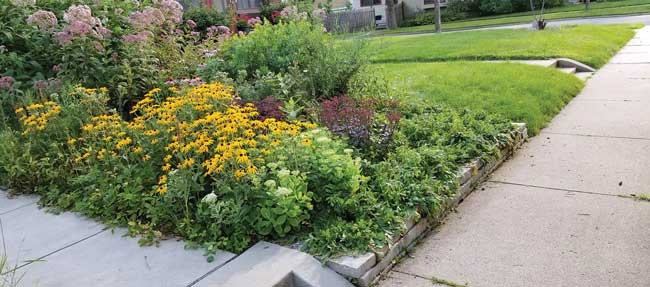If you have even a tiny patch of lawn, you can convert it to a pollinator-friendly landscape and help the comeback of an endangered species.
Minnesota is one of a few states that still has a Rusty Patched Bumblebee population and can make a big impact in its recovery. These bees and other pollinators need foraging and nesting areas to break up the nation’s 50 million acres of turfgrass and other inhospitable areas. They benefit from flowering lawns and taller native vegetation including wildflowers, shrubs and trees.

Fall Pollinator Prep
Fall Garden Clean Up
Don’t be so tidy! Leave areas for nesting: leaf “litter” on the ground, woodpiles, and 12” to 18” of plant stems, rather than cutting them down to the ground.
Plant a Bee Lawn
The best time to plant a bee lawn is in the fall when soil temperatures are below 40°F. When the temps warm in the spring, the seed will germinate.

Study Up
Learn more about the endangered Rusty Patched Bumble Bee and beneficial plants and practices from these organizations’ websites:

